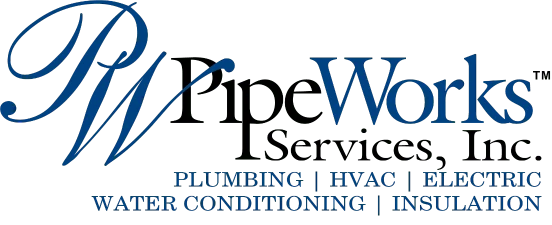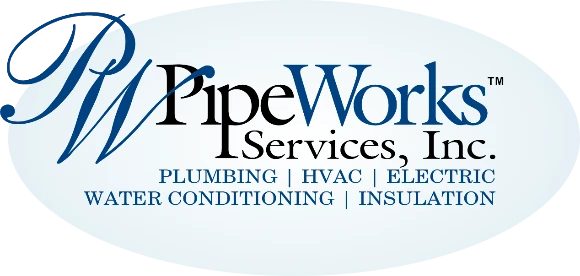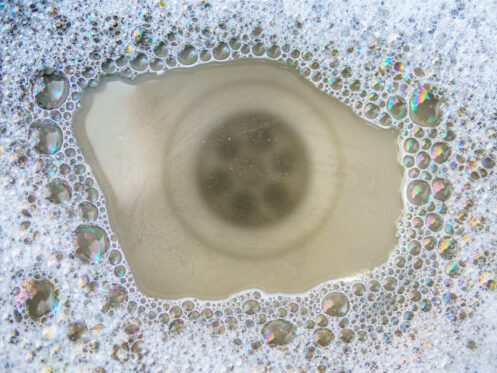If there’s one plumbing problem every home or commercial building owner faces sooner or later, it’s a clogged drain. A problematic clog will sometimes be in or near a sink’s P-trap. These are easy to solve by removing the trap by loosening the slip nuts and cleaning it out. However, some clogs are much deeper inside your plumbing system. The clog may be inside your main sewer line in the worst-case scenario. In these cases, more drastic measures are necessary to solve the problem. The two main options for clearing clogs of that type are snaking and hydrojetting. Here’s what you need to know about each and when they’re appropriate.
What Is Snaking?
Snaking is the common term describing the process of clearing a drain clog using an auger. A drain auger is a long metallic cable with either a simple wire coil or a cutting head on its end. Most drain snakes used for clogged sewer lines are motor-driven. That lets them rotate like a drill bit to power through a clog. Motorized augers were the invention of San Francisco plumber Samuel Blanc, who came up with the idea in 1933. Today, they’re a standard tool used by professional plumbers worldwide.
What Are the Advantages of Snaking?
One of the most important advantages of snaking is that it’s a time-tested and proven pipe-cleaning method. It’s been the go-to drain cleaning solution favored by professionals for decades. It’s also relatively quick and straightforward, and most plumbers will have the equipment on hand to do it.
Drain snaking is also the safest possible method of drain cleaning. Unlike chemical drain cleaners, it won’t degrade pipes and typically leaves no lasting aftereffects. An auger’s purpose is to shred any clogs it encounters to allow it to pass safely down your drain. The auger’s head isn’t very sharp, minimizing the risk of damage. That makes snaking ideal for older pipes or pipes that may be fragile.
What Are the Disadvantages of Snaking?
Although snaking a drain effectively clears most clogs, it has some drawbacks. One is that it may leave some debris behind, which can lead to another clog forming soon after. Plus, an auger can leave scratches inside a pipe if misused. In metal pipes, the scratches can open the door to rust formation and eventually lead to a leak. As a result, it isn’t something that an amateur should attempt.
Additionally, snaking may not work well in pipes with dense grease clogs. The auger head may pass through the grease, only for the hole to close right up behind it. Then, it may become difficult to remove the auger. Even after a professional extracts the auger, the clog may reform soon after.
What Is Hydro Jetting?
Hydro jetting, as its name implies, clears clogs using a stream of pressurized water. The technology that makes hydrojetting possible dates back to the 1850s. Back then, using pressurized water streams was a common mining method. In those cases, the water would have abrasive materials mixed into it that facilitated cutting through solid rock. It wasn’t until around 100 years later that the technology was adapted for plumbing use. Afterward, it became the clog-removal method of choice for commercial and industrial plumbing. It wasn’t until the last few decades that the process became affordable enough for residential use.
What Are the Advantages of Hydro Jetting?
The most beneficial advantage of hydrojetting is that it can completely clean the inside of pipes. It’s also effective for virtually any type of clog. Unlike an auger, hydrojetting can blast stubborn clogs away without leaving anything behind. The plumber uses a flushing nozzle to push any remaining debris out of your plumbing and into your municipal sewer system or septic tank once they break up the blockage. This process means there’s less chance of a clog reoccurrence after they address the issue.
Hydrojetting is also quite effective at removing tree roots. They’re a common cause of obstructed sewer lines. When a plumber clears your line, they use a rotary nozzle or root-cutting head. These heads use spinning jets of high-pressure water that cut through the roots, breaking them apart without damaging the pipe.
Hydrojetting is safe for any type of pipe as long as it’s in good physical condition. It can also be used as a preventative measure to keep your home or business’s drains and sewer lines clear.
What Are the Disadvantages of Hydro Jetting?
There are two main disadvantages associated with hydrojetting. One is that it can damage older or compromised pipes. Therefore, a camera inspection is typically performed in advance to look for signs of preexisting pipe damage. That makes hydrojetting a more involved and costly process than snaking.
Hydrojetting also requires specialized equipment that some plumbers don’t have. Plus, a plumber must have specific training to perform the procedure. Without it, the hydrojetting process might do more harm than good.
Choosing Between Snaking and Hydro Jetting
Choosing between snaking and hydrojetting typically comes down to a few factors. One is the nature of the clog you’re dealing with. If you’ve just noticed a slow drain, snaking is almost always your first and best option to fix it. There are two main reasons for that. One is that snaking is far cheaper than hydrojetting. So, even if it only temporarily solves your problem, it’s still worth it. The second reason is that snaking is broadly effective for most clog types. So, unless you have some reason to suspect a grease clog or a tree root incursion, it should work.
Another reason you might choose snaking is time. It’s generally faster to resolve a clog using snaking than it is to have hydrojetting performed. So, if you lack the time to go with the more involved solution, snaking’s the way to go.
Hydrojetting, by contrast, maybe a better solution if you’re dealing with recurring clog problems. At that point, it would be worth spending a bit more for a thorough camera inspection and cleaning. Plus, the results of the hydrojetting procedure will be longer-lasting. The only reason you’d need to stay away from hydrojetting is if you know your pipes are too old to withstand it. You may also use hydro-jetting as a long-term pipe maintenance strategy. Snaking is not suitable for that purpose since it cannot clean down to your pipe’s walls.
Your Go-to Clog Removal Specialists
Whether you need snaking or hydrojetting performed at your Chatham, NJ, home or business, Pipe Works Services can help. We’ve served the local community since 2000. We offer plumbing, electrical, and HVAC services. In addition, we can help with all your insulation, ductwork, and indoor air quality needs. Our staff of plumbers and electricians have the latest training and years of experience. Alternatively, our HVAC technicians are NATE-certified. We even offer 24/7 emergency services for problems that can’t wait. Contact us today to schedule an appointment with one of our experienced professionals for drain cleaning.





